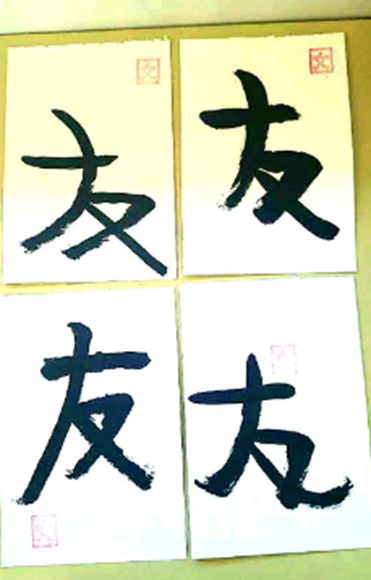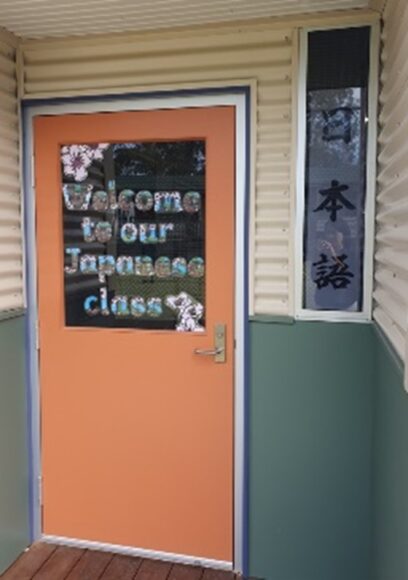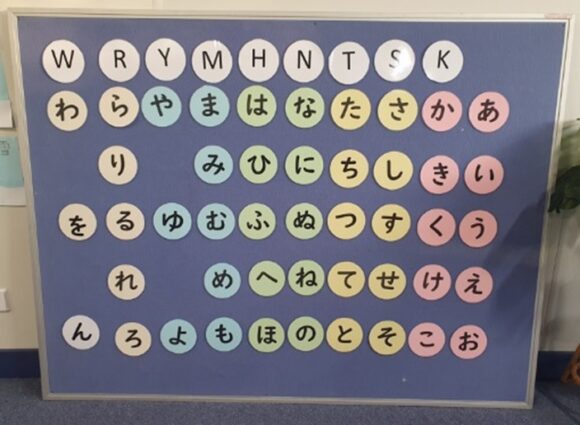Senseis’ Voices
The Power of Grassroots Advocacy in Japanese Language Education
This Senseis’ Voices article is contributed by Junko Nichols, Director of the Monash Japanese Language Education Centre. She generously shares a range of practical strategies to help raise the visibility and perceived value of Japanese language education among stakeholders in everyday contexts.
In our work as Japanese language teachers, we wear many hats. We are educators, facilitators, organisers, cheerleaders, and more. However, one of the most powerful roles we can play—aside from delivering rich lesson content and helping students develop language skills and cultural literacy—is that of a grassroots advocate: someone who quietly and consistently builds understanding and support for our programmes from the ground up. Over the years, I have found that these simple, yet intentional approaches can make all the difference.
1. Find Your Ally

Due to family circumstances, I have had to relocate and work in different schools. Every time I started at a new school, the very first thing I prioritised was building relationships.
I invested time and energy into getting to know my colleagues and the leadership team—not just professionally, but as people.
Among them, I always find one or two colleagues who understand my passion and educational philosophy. These are the people who become your allies.
When you want to make something happen—a new project, an incursion, a trip, or a change to the curriculum—those allies will be the ones who advocate for you behind the scenes, push you forward when you hesitate, and stand by you when you propose something new. Grassroots advocacy starts with relationships.
2. Keep Telling the Good News

We celebrate student successes in class all the time—whether they have finally mastered a tricky kanji or delivered a short speech with confidence. But how often do we take these little wins beyond the classroom?
Share the good news far and wide. Inform your leadership team about what your students have been working on and how they have achieved their goals. They might not come and ask you about your lessons, but they will certainly appreciate hearing good news. Write a short blurb for the school newsletter.
Ask your school to post a photo on its social media page. Let your colleagues and parents know why what happened in your lesson was not only exciting but also meaningful for their child’s learning journey. A brief email to parents acknowledging their child’s genuine effort or success takes only a few minutes—but the impact can be greater than you expect.
Do not underestimate the power of casual conversation, either. In the staffroom or during yard duty, tell a colleague about a small triumph a student had in your class that day. These small moments, when shared consistently, help build recognition and support for the Japanese programme in your school. They become part of the school’s story—and part of what makes the language programme feel alive and valued.
3. Make Your Japanese Programme Visible
Visibility matters. When the school community can see Japanese, they begin to value it more. Ask yourself: is there anything in your school’s front office or reception area that shows Japanese is part of your school’s identity? Seasonal displays, student work, or cultural artefacts—such as Tanabata wishes or Kodomo no Hi—can all make your programme more visible to families and visitors.
Choose student language leaders to help set up displays or promote events. Involve Japanese-speaking parents or those with a connection to Japanese culture in lessons or incursions—this not only builds community but also brings authenticity and joy to your teaching.
Make the language present throughout the school: display language learning posters or Japanese phrases in classrooms, corridors, and shared spaces. Label rooms and facilities in Japanese. Collaborate with other specialists—run a Japanese art project with the Art teacher, hold a mini Undōkai with PE staff, or explore Japanese cooking in the kitchen and garden class. If your school has a garden, you could plant some Japanese herbs!
If you have not already, consider running a Japanese Day or Matsuri—it is always a highlight and an opportunity to involve the whole school. Think about hosting a Japanese cooking fundraiser, or even a short Japanese language course for parents and staff. Let students take pride in showcasing their skills to their families—it is a win-win that creates powerful advocates.
Even small touches—like adding a Japanese phrase of the week or a short video link in the school newsletter—can spark curiosity. You never know which parent, teacher, or student might discover a lifelong love of Japanese through one of these moments.
4. Proposals or Issues with Solutions
When you have issues to discuss, do not approach your leadership with just the problems. Bring a few possible solutions as well—this increases the likelihood of agreeing on the next step forward.
When you want to introduce something new—whether it is a bento-making workshop, a language exchange, or a cross-curricular project—bring a clear, detailed plan to your leadership team. Present what, why, and how. When everything is mapped out—timelines, costs, logistics, outcomes—people are much more likely to say YES. It is important to start small. A series of small, successful initiatives helps build trust and credibility. Over time, these pave the way for bigger, more ambitious projects. Each small step adds up, and eventually, your grassroots efforts become a strong, visible presence in the school community.
You’re Not Alone

One final message: connect with your fellow Japanese teachers. If possible, find someone local—someone close enough to have coffee with or drop in on for a lesson observation. Language teaching can be isolating, but it does not have to be. Together, we are stronger. We can support one another through the tough days and celebrate the joyful ones. Some days are overwhelming. Other days fill you with quiet pride and joy.
We may not always see the seeds we plant grow and blossom—but they do. Every Japanese teacher is making a lasting impact on their students’ lives. Let us keep growing this garden, one conversation, one celebration, and one proposal at a time.
Contributed by: Junko Nichols
Director, Monash Japanese Language Education Centre
June 2025
Related Links
Photo: whale | Haline Ly


